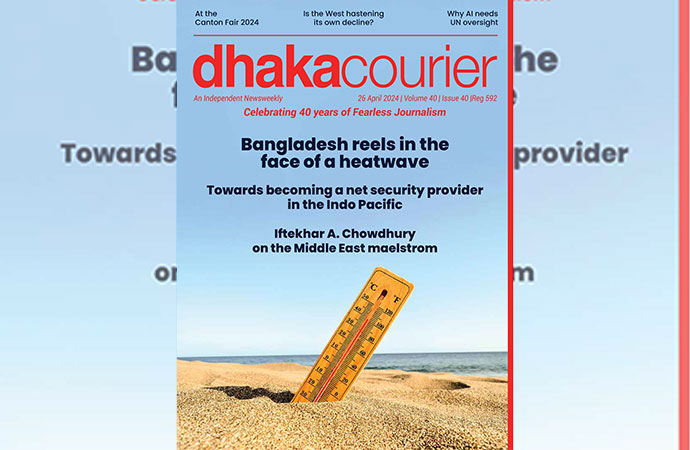Featured 2

We—living in the middle of Bangladesh’s fringes, Photography: Noor Ahmed Gelal, Editor: Peter Dietzel, Publisher: NETZ Bangladesh
The outstanding photo book "We-living in the middle of Bangladesh's fringes" offers a perceptive portrayal of the tremendous impact of development initiatives on the lives of common people in rural Bangladesh. The lives, difficulties, and resiliency of rural Bangladeshis are highlighted in this special partnership between a photographer and a non-profit organization against the backdrop of climate change and poverty.
The development initiative at the heart of this book empowers Bangladesh's most vulnerable communities to build local adaptation strategies to mitigate the effects of climate change. With the use of his skilled camera, Gelal captures a range of individuals-from the young to the elderly-working together for the greater good.
The development initiative at the center of this book helps Bangladesh's most vulnerable communities create local adaptation plans to fight the harmful consequences of climate change. A wide range of people, from the very young to the very old, are shown cooperating to improve their standard of living in Gelal's exquisite photographs.
These moving pictures also expose the hard realities that rural Bangladesh must deal with, including ongoing flooding, erosion, and abject poverty. Despite those hardships, a palpable sense of hope and determination radiates from the pages as these resilient people strive to forge a brighter future for themselves and their families.
A powerful illustration of the enormous effect of development initiatives and the unwavering fortitude of rural Bangladeshis can be seen in the book. Photographs by Gelal are more than just pictures; they are windows into the radiance, tenacity, and unflappable spirit of these communities.
Taslim Uddin Ahmed casts his net in the Dudhkumar river in Kurigram.
Because it tells the tale from the viewpoint of those who truly reside in rural Bangladesh, this book stands out. Gelal's photographs offer an intimate glimpse into their routines, issues, and dreams. The book demonstrates how this development initiative is solving the serious problems posed by climate change while also enabling people to adapt to adversities brought on by the climate, such as erosion and flooding. The images commemorate rural Bangladeshis' extraordinary resiliency and resolve while also painfully illustrating the disastrous effects of climate change. The book Through the Lens of Resilience serves as both a potent reminder of the success of development programs and a celebration of the human spirit.
With the Dheki, the women separate rice grains from the outer husks to produce brown rice.
Anyone interested in climate change, Bangladesh, rural development, or the fine art of photography should read this book. Additionally, it is a useful tool for policymakers, educators, and students. The book's layout and production are of the highest caliber, making it a strikingly beautiful and intensely moving monument to the value of empathy and compassion. Despite our origins or the challenges we face, it beautifully illustrates through its pages how we are all woven together in the web of mankind.
Ms Begum explains: "This type of pumpkin lasts two years. If I can't leave the house during the next flood, I'll use it to make a delicious curry."
"We-living in the middle of Bangladesh's fringes," which was photographed by Noor Ahmed Gelal and edited by Peter Dietzel, is a monument to the strength of cooperation, the beauty of resilience, and the tenacious spirit of individuals living on the margins. It is a book that speaks to your spirit, inspiring you to consider how intertwined everything is and how much room there is for making the world a better place.

























Leave a Comment
Recent Posts
Journalists critical of their ...
This spring, NBC News, The New York Times and National Public Radio ha ...
How to Protect Outdoor Workers ...
The scorching heat waves can pose serious health risks, especially for ...
Relations with Qatar: Of growing importance
Less than half of the companies in Bangladesh
Neighbours Pakistan and Iran on Wednesday pledged to ..
Bangladesh criticises US Human Rights Report for sys ..